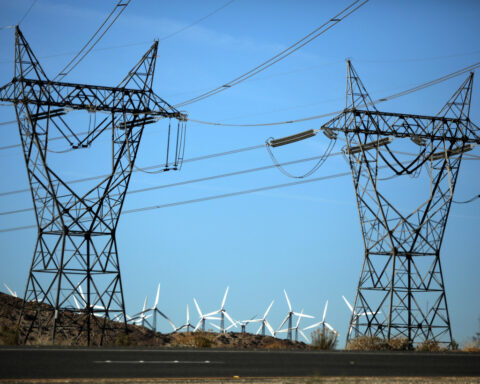Regional economies around the US depend on central government funding. Some localities depend heavily on central subsidies, while others contribute more into the national coffers than they get. This article details each state's federal funding dependence, distinguishing the most and least dependent.
Federal Taxation: A Broad Overview
In 2022, the federal government amassed a record $6.27 trillion, thanks mostly to tax revenue from citizens and corporations. The major portion of tax collection falls under the responsibility of the federal government, but eventually, this money is channeled to individual states. This scenario leads to a fascinating reallocation of financial resources throughout the states within America.
To gain clarity on this matter, we examined governmental spending and taxation data. From this investigation, we aimed to determine which states received the maximum benefits or suffered the most from their contributed tax dollars.
Key Observations
Let's dissect and discuss some notable conclusions drawn from this study:
- In the United States, nearly 42% of total revenue generated through income tax is contributed by the wealthiest 1%. About 10% of all federal tax receipts is this amount. To articulate it more accurately, the highest earning 1% in regions like California, New York, Texas, and Florida paid 16.13%, 8.34%, 7.85%, and 7.58%, respectively, of the overall federal income tax revenue.
- Only in New Mexico is the ratio of federal assistance received to taxes paid tilted more towards assistance. It contributes less in taxes than what it gets back from the federal government. For every federal dollar in aid New Mexico receives, it contributes 85 cents in taxes.
- The states of Minnesota, New Jersey, Delaware, Illinois, and Florida are identified as being the least reliant on federal aid. It's observed that in these particular regions, inhabitants pay a minimum of $5 in taxes to the central administration for each dollar they receive in the form of direct financial assistance.
- The State of Texas' inclination for lavishness significantly contributes to the high income generated by the federal government. The state pays a staggering $17B in excise taxes to the federal government.
The Most Federally Dependent States: A Closer Look
Let's now examine the states most reliant on federal funding:
1. New Mexico
The bond between New Mexico and the central government stands out as rather peculiar when compared to other states. This uniqueness is further fueled by the "brain drain" event, a situation where exceptionally educated individuals exit the state in pursuit of better opportunities elsewhere, leading to significant shifts in its economic landscape.
2. West Virginia
West Virginia receives almost equal assistance from the federal government as it contributes in taxes. In an analytical study by SmartAsset, West Virginia was ranked third amongst states with the highest financial stress on its citizens, recording a poverty rate of 16.8 percent.
3. Alaska
Alaska's unique geographical location and harsh climate necessitate more support than most states. For each monetary assistance received, the state reciprocates by approximately $1.09.
4. Mississippi
A variety of elements contribute to Mississippi's reliance on federal funds, leading to a return of just $1 for each $0.19 gathered in taxes. Several contributing factors, such as elevated levels of poverty, low educational achievement rates, and susceptibility to natural calamities, worsen the financial plight experienced by this state.
5. Montana
Montana, a picturesque state, also plays host to several federally managed facilities. During the year 2021, monetary contributions from the federal government amounted to roughly $5.1 billion for Montana. The state reciprocated approximately $1.53 for each dollar it received in aid.
The Least Federally Dependent States: An Analysis
In contrast, here are the least-dependent-on-the-federal-government-funding states:
1. Minnesota
With a contribution of $6.88 to the federal treasury for every dollar it receives, Minnesota ranks first among the least dependent states. With its strong agricultural sector and above-average median household income, Minnesota enjoys a level of fiscal independence.
2. New Jersey
New Jersey's financial flourishing markedly impacts the allocation of federal funds, a consequence of the region's densely populated areas, its advantageous proximity to major cities, and its highly skilled labor force. The state injects $6.28 into federal revenues for every single dollar it gets back in return.
3. Delaware
Delaware, famed for its conducive business atmosphere, is the home state for over 65% of enterprises included in the Fortune 500 list. This state's contribution to federal revenues reaches nearly $32.3 billion annually. Intriguingly, for every dollar it obtains from federal funding, Delaware returns an impressive $6.09.
4. Illinois
In a national evaluation of state gross domestic products, Illinois proudly ranks fifth, and it's also the sixth most densely populated area in the United States. Comparatively speaking with its counterparts, Illinois exhibits lesser dependence on financial aid from federal entities as it contributes roughly $5.88 in taxes for every dollar sourced from Washington.
5. Florida
Florida's vibrant tourism industry and large GDP make it the fifth least dependent state on federal funding. The Sunshine State contributes $5.78 in taxes for every $1 it receives in federal aid.
Understanding the Methodology and Data
The study scrutinized an array of fiscal data, encompassing personal earnings tax, business tax obligations, duty taxes, donation taxes, and inheritance taxation. These were all recognized as total earnings by the federal government. To estimate the ratio of tax income that would be refunded to the national government in 2021, we compared these figures with the federal expenditure assigned to state and municipal governments. https://www.lapost.com/dream-state-no-more-why-californians-are-fleeing-record-high-housing-costs/
Tax Planning Tips
Drawing from our research, we present several suggestions for organizing your tax preparations:
- Seek advice from a financial expert: Initiating a discussion with someone proficient in the field of finance could aid you in understanding and planning for your tax responsibilities.
- Monitor your expenditures and evaluate if they surpass the basic deduction, particularly if you're contemplating itemizing your deductions rather than opting for the standard one.
- Utilize a range of tools, including income tax estimators, capital gains computation devices, and property tax calculators, to gain insights into your annual tax obligation.

 Trump has begun another trade war. Here's a timeline of how we got here
Trump has begun another trade war. Here's a timeline of how we got here
 Canada's leader laments lost friendship with US in town that sheltered stranded Americans after 9/11
Canada's leader laments lost friendship with US in town that sheltered stranded Americans after 9/11
 Chinese EV giant BYD's fourth-quarter profit leaps 73%
Chinese EV giant BYD's fourth-quarter profit leaps 73%
 You're an American in another land? Prepare to talk about the why and how of Trump 2.0
You're an American in another land? Prepare to talk about the why and how of Trump 2.0
 Chalk talk: Star power, top teams and No. 5 seeds headline the women's March Madness Sweet 16
Chalk talk: Star power, top teams and No. 5 seeds headline the women's March Madness Sweet 16
 Purdue returns to Sweet 16 with 76-62 win over McNeese in March Madness
Purdue returns to Sweet 16 with 76-62 win over McNeese in March Madness








